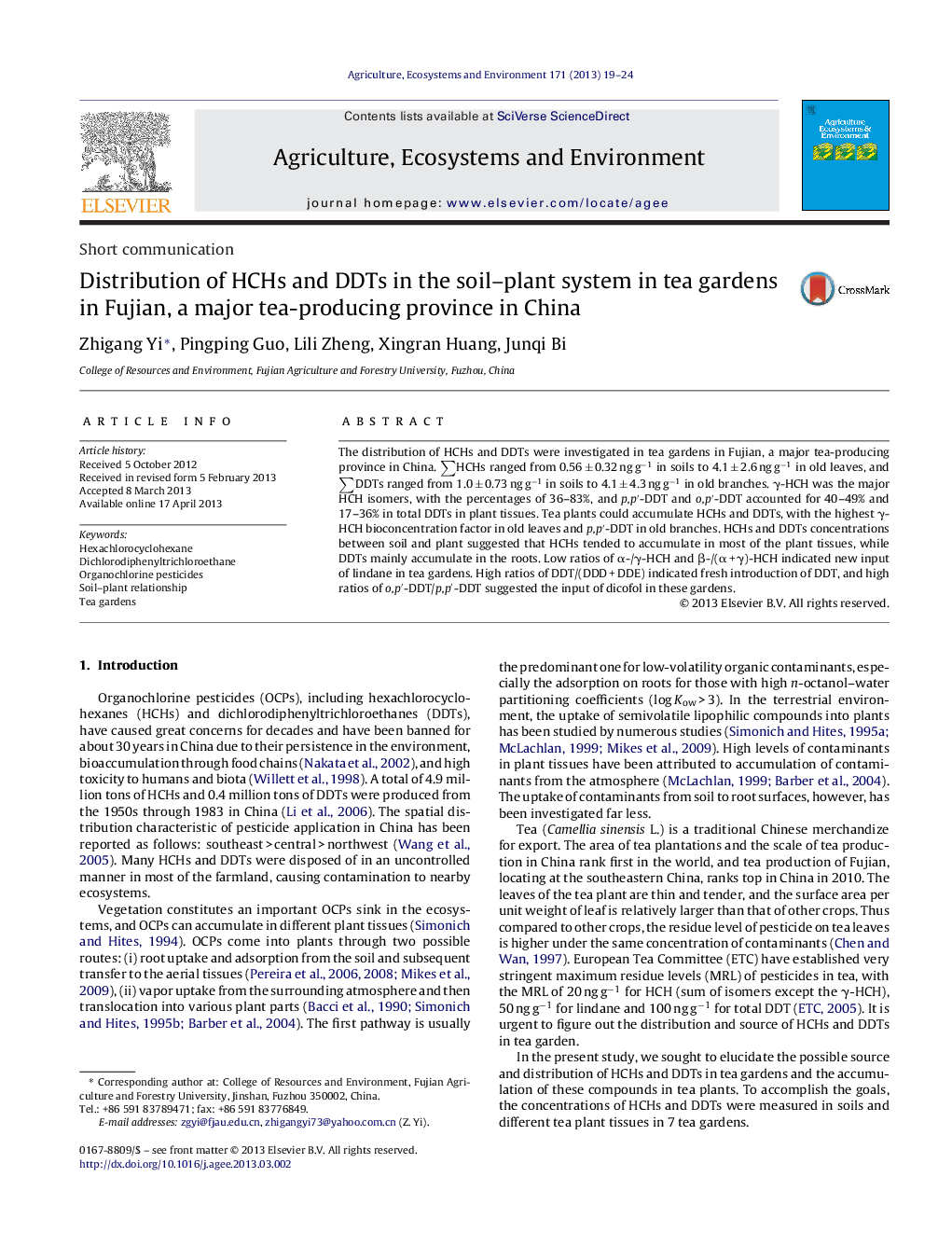| Article ID | Journal | Published Year | Pages | File Type |
|---|---|---|---|---|
| 2414257 | Agriculture, Ecosystems & Environment | 2013 | 6 Pages |
•Tea plant selective accumulated α-HCH, δ-HCH and p,p′-DDT in roots.•γ-HCH, p,p′-DDT and o,p′-DDT were the dominant compounds in tea plants.•New input of lindane and dicofol were found in tea gardens.•Root uptake and translocation to the plant aerial tissues was a possible pathway.
The distribution of HCHs and DDTs were investigated in tea gardens in Fujian, a major tea-producing province in China. ∑HCHs ranged from 0.56 ± 0.32 ng g−1 in soils to 4.1 ± 2.6 ng g−1 in old leaves, and ∑DDTs ranged from 1.0 ± 0.73 ng g−1 in soils to 4.1 ± 4.3 ng g−1 in old branches. γ-HCH was the major HCH isomers, with the percentages of 36–83%, and p,p′-DDT and o,p′-DDT accounted for 40–49% and 17–36% in total DDTs in plant tissues. Tea plants could accumulate HCHs and DDTs, with the highest γ-HCH bioconcentration factor in old leaves and p,p′-DDT in old branches. HCHs and DDTs concentrations between soil and plant suggested that HCHs tended to accumulate in most of the plant tissues, while DDTs mainly accumulate in the roots. Low ratios of α-/γ-HCH and β-/(α + γ)-HCH indicated new input of lindane in tea gardens. High ratios of DDT/(DDD + DDE) indicated fresh introduction of DDT, and high ratios of o,p′-DDT/p,p′-DDT suggested the input of dicofol in these gardens.
